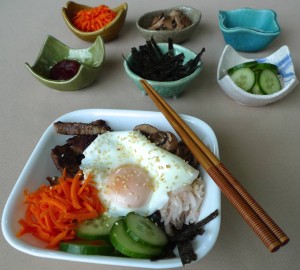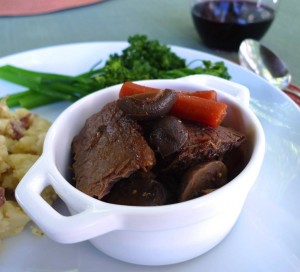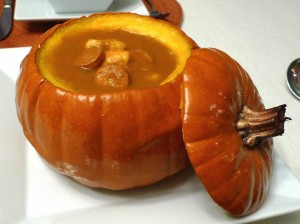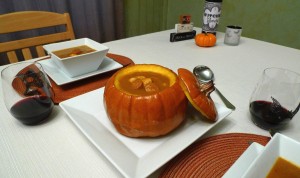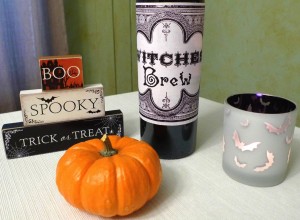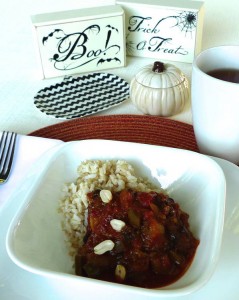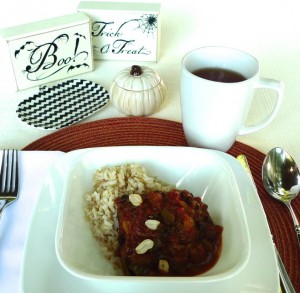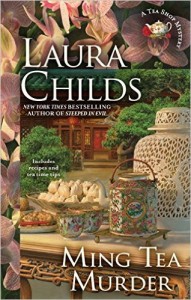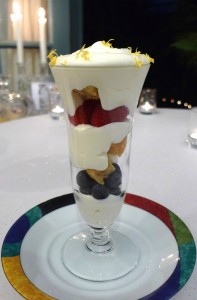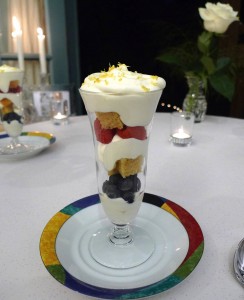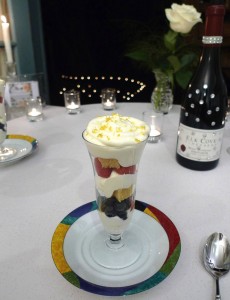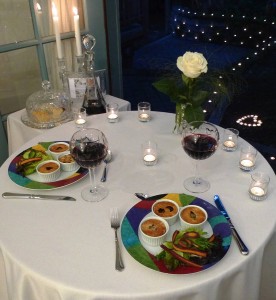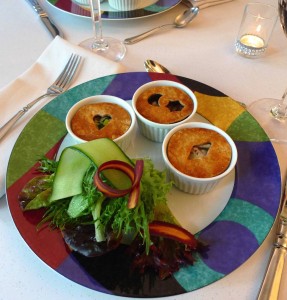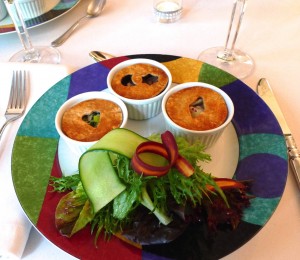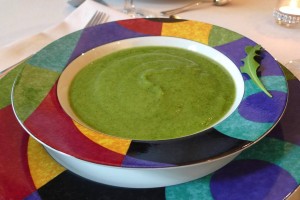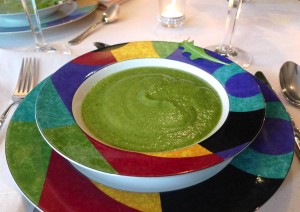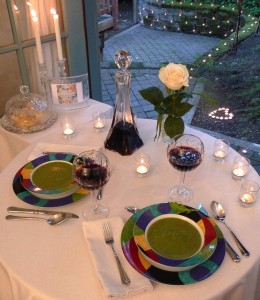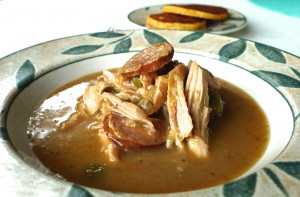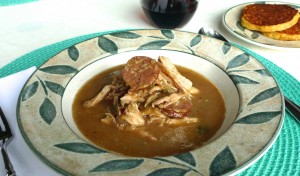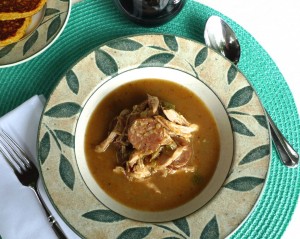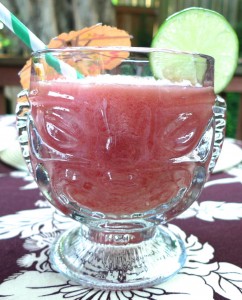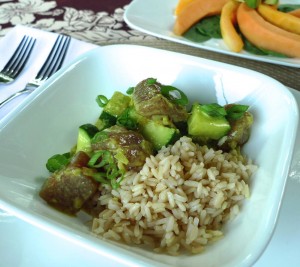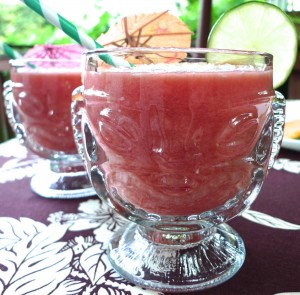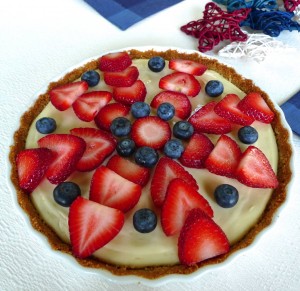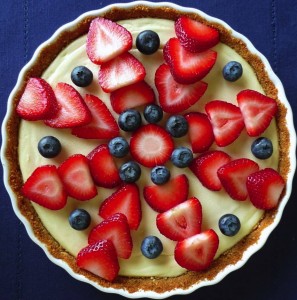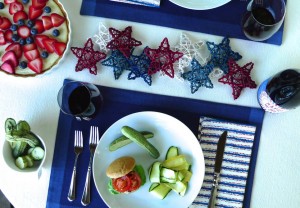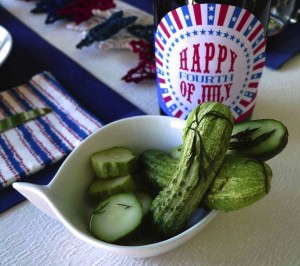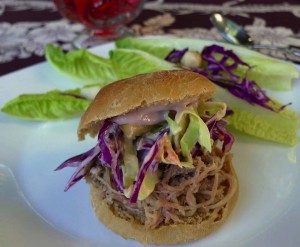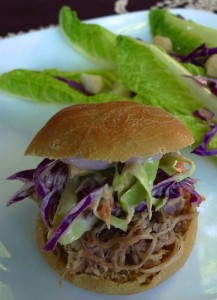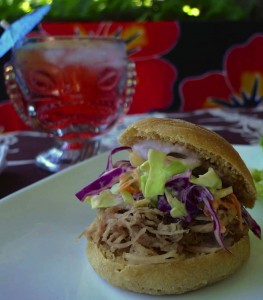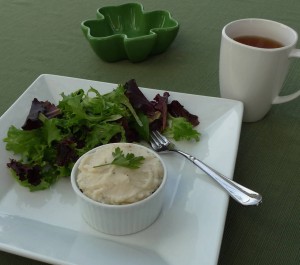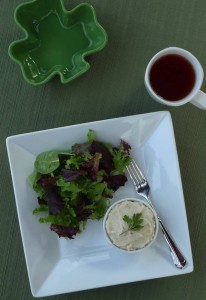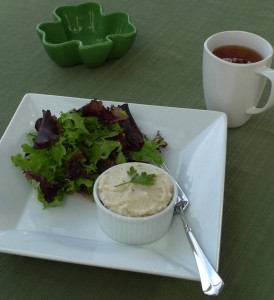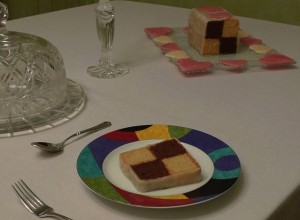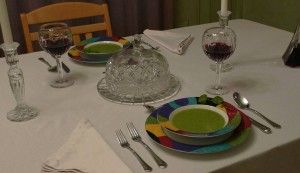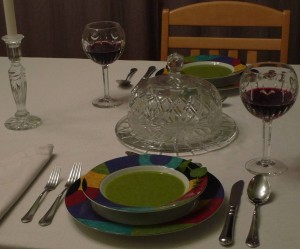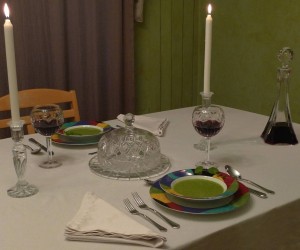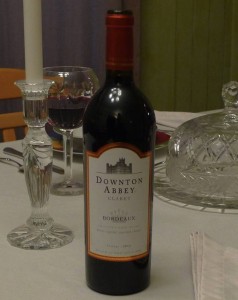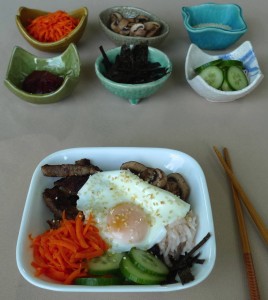 When my menus start feeling redundant and boring, I find inspiration in new dishes and ingredients I’ve never tried before from countries all around the world. Cooking an exotic dish adds adventure to my table and also gives me a virtual culinary trip to another land. I also learn new things, which gets me excited in the kitchen again and revives my love for cooking. Not a bad way to spend a Sunday evening. 😉
When my menus start feeling redundant and boring, I find inspiration in new dishes and ingredients I’ve never tried before from countries all around the world. Cooking an exotic dish adds adventure to my table and also gives me a virtual culinary trip to another land. I also learn new things, which gets me excited in the kitchen again and revives my love for cooking. Not a bad way to spend a Sunday evening. 😉
Tonight I made a dish called bibimbap! (Fun to say, but more fun to eat! 😉 ) Bibimbap is a Korean dish that literally means ‘mixed rice.’ It is topped with a colorful group of vegetables, marinated beef, and an egg in the center. One key ingredient is a red pepper paste called gochujang that gives the whole dish a distinct and spicy flavor. It is available at Asian markets such as Uwajimaya.
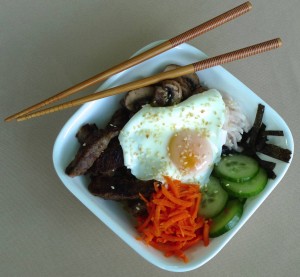 This recipe is from a magazine called Edible Seattle. I only made a few small changes to make it a little healthier. I used brown rice, low sodium soy sauce, a couple extra carrots, and the leanest local grass fed beef I could find. First I made the quick pickles and marinated the beef. Then the final recipe at the bottom puts everything together. (The beef would also be delicious on it’s own with a simple side vegetable and some rice.)
This recipe is from a magazine called Edible Seattle. I only made a few small changes to make it a little healthier. I used brown rice, low sodium soy sauce, a couple extra carrots, and the leanest local grass fed beef I could find. First I made the quick pickles and marinated the beef. Then the final recipe at the bottom puts everything together. (The beef would also be delicious on it’s own with a simple side vegetable and some rice.)
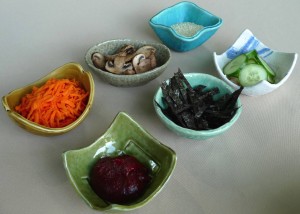 Bibimbap
Bibimbap
Based on a recipe from Edible Seattle
Quick Pickled Cucumber:
1 tablespoon sea salt
3 tablespoons granulated sugar
2 tablespoons rice vinegar
2 tablespoons water
1 pound English cucumber
Stir together the salt, sugar, vinegar, and water until dissolved. Pour the liquid into a small bowl. Slice the cucumber as thinly as possible with a knife or mandoline.
Place the cucumber into the bowl of pickling liquid. Allow to sit 20 minutes. Remove the cucumber from pickling brine before serving.
Bulgogi Beef:
1 pound lean high-quality steak (I used sirloin)
½ Asian pear
6 garlic cloves
½ small yellow onion
2 teaspoons grated ginger
¼ cup low-sodium soy sauce
¼ cup mirin
¼ teaspoon black pepper
2 tablespoons toasted sesame oil
2 green onions, finely sliced
Trim any excess fat off of the steak. Cut into thin strips, about ¼ inch thick, against the grain.
Place all remaining ingredients, except green onions, in a blender or food processor, and run on high until puréed.
Pour the puréed mixture and the green onions into a gallon-sized zip lock bag, and add the streak strips. Close the bag, and massage the marinade into the beef. Let sit in the refrigerator for at least at hour.
Preheat grill pan on high heat. Remove the beef from the marinade, and lightly shake off excess liquid before grilling. Grill each side for about 1 to 2 minutes, or until browned.
Bibimbap:
(Final steps and assembly)
For the gochujang sauce:
2 tablespoons granulated sugar
2 tablespoons water
2 teaspoons rice vinegar
2 garlic cloves, minced
¼ cup gochujang pepper paste
2 tablespoons toasted sesame oil
For the bowl:
2 cups medium grain brown rice
4 small carrots
3 sheets roasted nori seaweed
5 ounces mushrooms of your choice (I used crimini)
4 large eggs
2 tablespoons toasted sesame seeds
To make the gochujang sauce, dissolve the sugar into the water and vinegar in a medium bowl. Add the garlic and gochujang paste, and whisk until well combined. Whisk in the sesame oil. Set aside.
Rinse the rice in cold water until the water runs clear. Cook according to package instructions. Cover with a lid to keep warm until serving.
Shred carrots, and set aside.
Cut the nori into ¼ inch strips with kitchen shears. Set aside.
Slice the mushrooms. Preheat a medium sauté pan. Once it is hot, cook the mushrooms until they have released their liquid and begin to caramelize. Set aside.
Before cooking the eggs, set the table with side dishes. (The sauce, extra nori, extra pickles, etc.) Then prepare the individual bowls. Each bowl starts with a mound of rice in the bottom. Then arrange the toppings around the top of the rice to fully cover it. Toppings include the beef, pickled cucumbers, carrots, mushrooms, and seaweed.
In a large sauté pan with a lid, heat about 1 cup of water until steaming. Place the cracked eggs in the water and cover the lid. Cook until the white is cooked through, but the yolk is still runny. (I call this shallow poaching. It requires no oil, and you don’t need to wait for a pot of water to come to a boil as you do for traditional poached eggs.)
Place a cooked egg in the middle of each bowl. Sprinkle some sesame seeds over the top, and allow each individual to add sauce and other extra toppings at the table.
